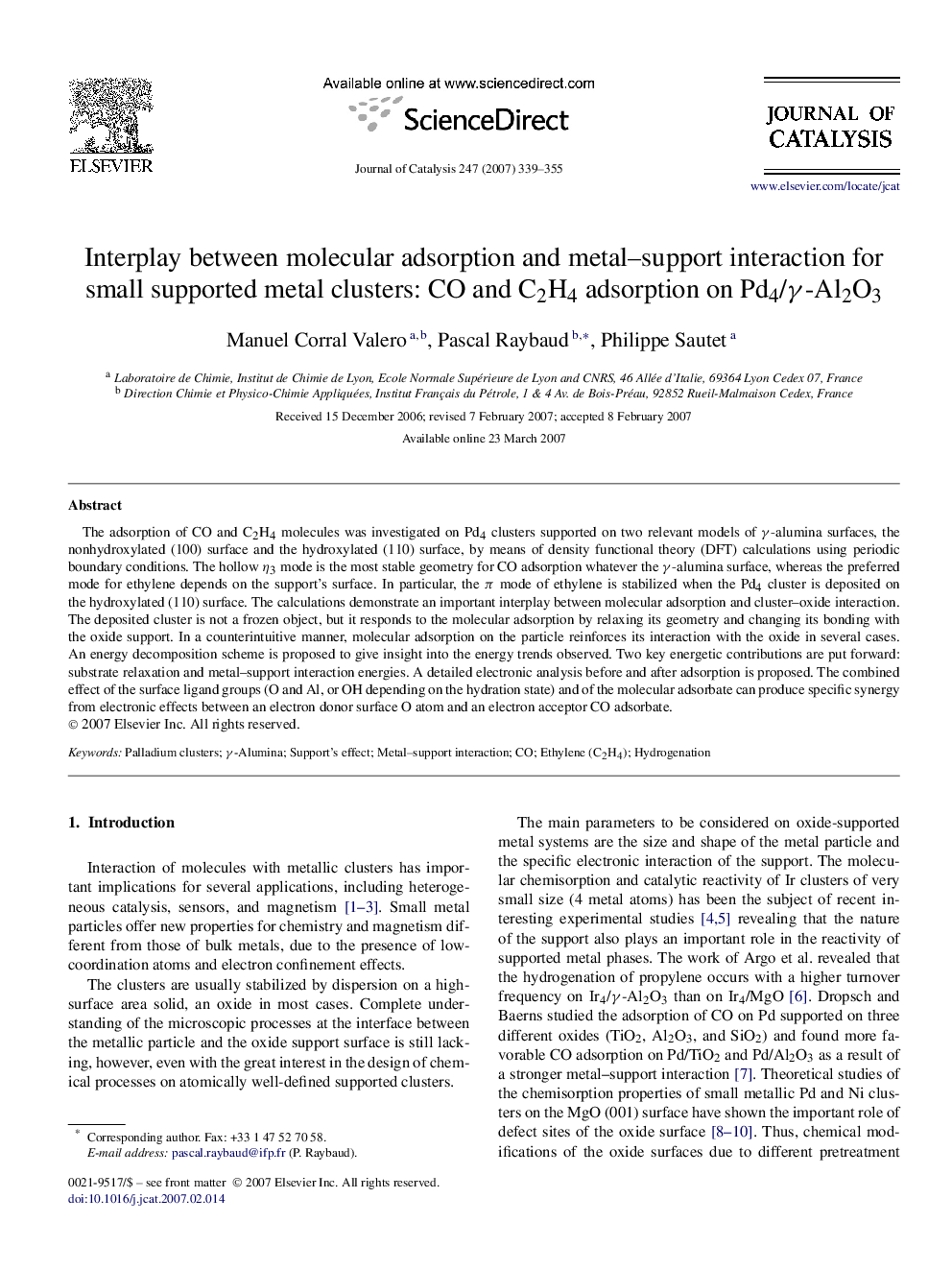| Article ID | Journal | Published Year | Pages | File Type |
|---|---|---|---|---|
| 63204 | Journal of Catalysis | 2007 | 17 Pages |
The adsorption of CO and C2H4 molecules was investigated on Pd4 clusters supported on two relevant models of γ -alumina surfaces, the nonhydroxylated (100) surface and the hydroxylated (110) surface, by means of density functional theory (DFT) calculations using periodic boundary conditions. The hollow η3η3 mode is the most stable geometry for CO adsorption whatever the γ-alumina surface, whereas the preferred mode for ethylene depends on the support's surface. In particular, the π mode of ethylene is stabilized when the Pd4 cluster is deposited on the hydroxylated (110) surface. The calculations demonstrate an important interplay between molecular adsorption and cluster–oxide interaction. The deposited cluster is not a frozen object, but it responds to the molecular adsorption by relaxing its geometry and changing its bonding with the oxide support. In a counterintuitive manner, molecular adsorption on the particle reinforces its interaction with the oxide in several cases. An energy decomposition scheme is proposed to give insight into the energy trends observed. Two key energetic contributions are put forward: substrate relaxation and metal–support interaction energies. A detailed electronic analysis before and after adsorption is proposed. The combined effect of the surface ligand groups (O and Al, or OH depending on the hydration state) and of the molecular adsorbate can produce specific synergy from electronic effects between an electron donor surface O atom and an electron acceptor CO adsorbate.
